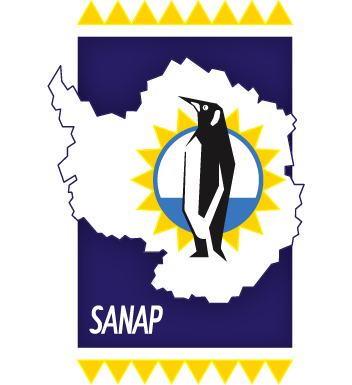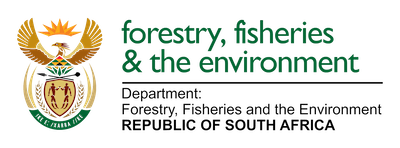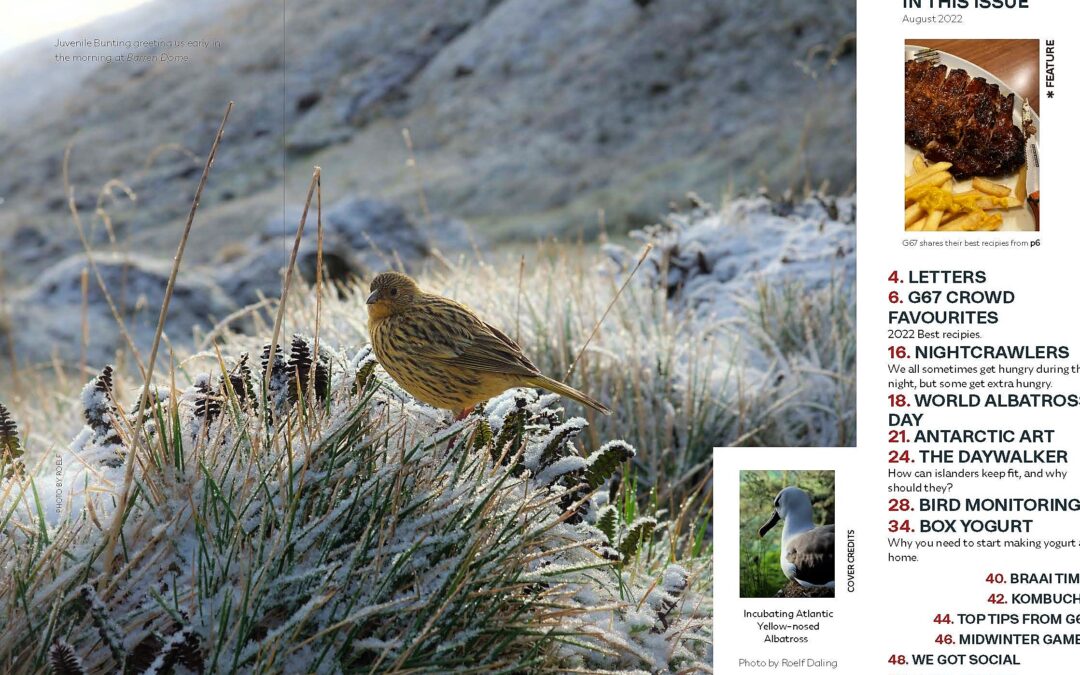
by Ria Olivier | Sep 8, 2022 | Announcement, Gough Island, Newsletters>Gough Island Newsletters, Overwintering Team, SANAP
 “It is with mixed emotions that we send these final greetings from the G67 team! The time has come to present our ultimate Bunting newsletter before handing over the reins to the next editor(s) who will be responsible for introducing the resilient members of G68.” – Editor Gough Bunting.
“It is with mixed emotions that we send these final greetings from the G67 team! The time has come to present our ultimate Bunting newsletter before handing over the reins to the next editor(s) who will be responsible for introducing the resilient members of G68.” – Editor Gough Bunting.
Read the final Newsletter form the Gough67 Overwintering Team. Inside this issue:
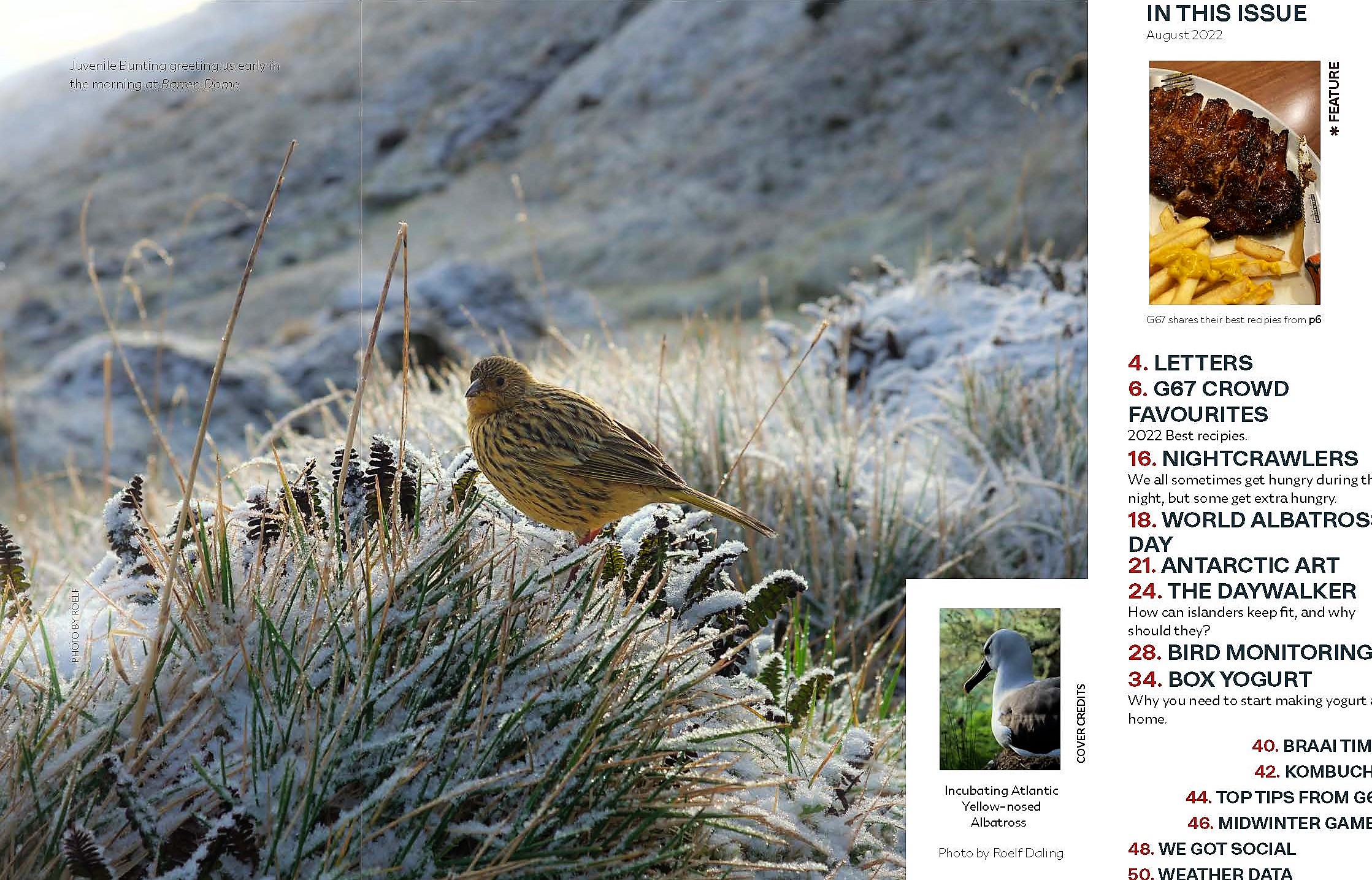
“Goodbye Gough Island and thank you for everything.” – Sandile Nkebe (Team
leader of G67)
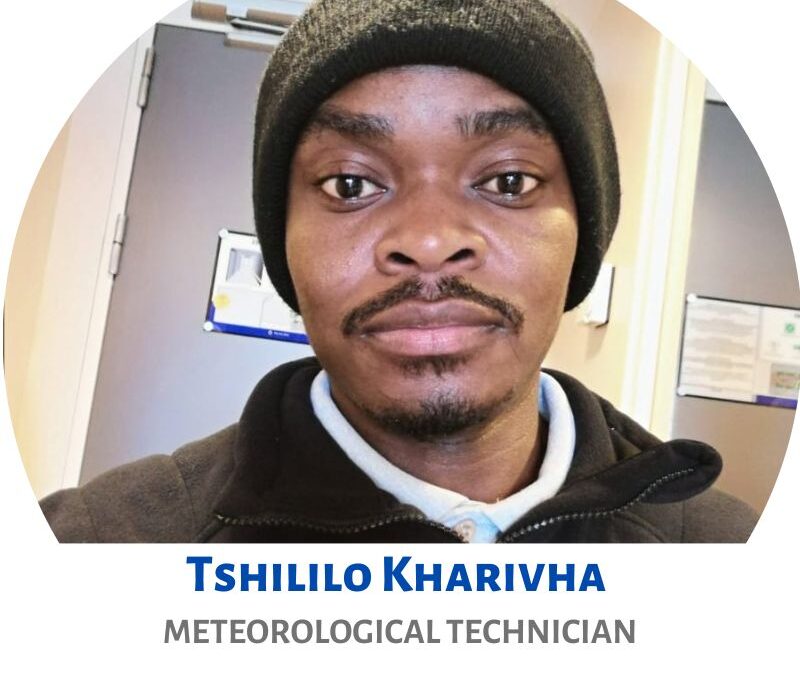
by Ria Olivier | Aug 25, 2022 | Announcement, Current Event, Gough Island, News, Overwintering Team, Stations, Team member, Team Photo, Tristan da Cunha
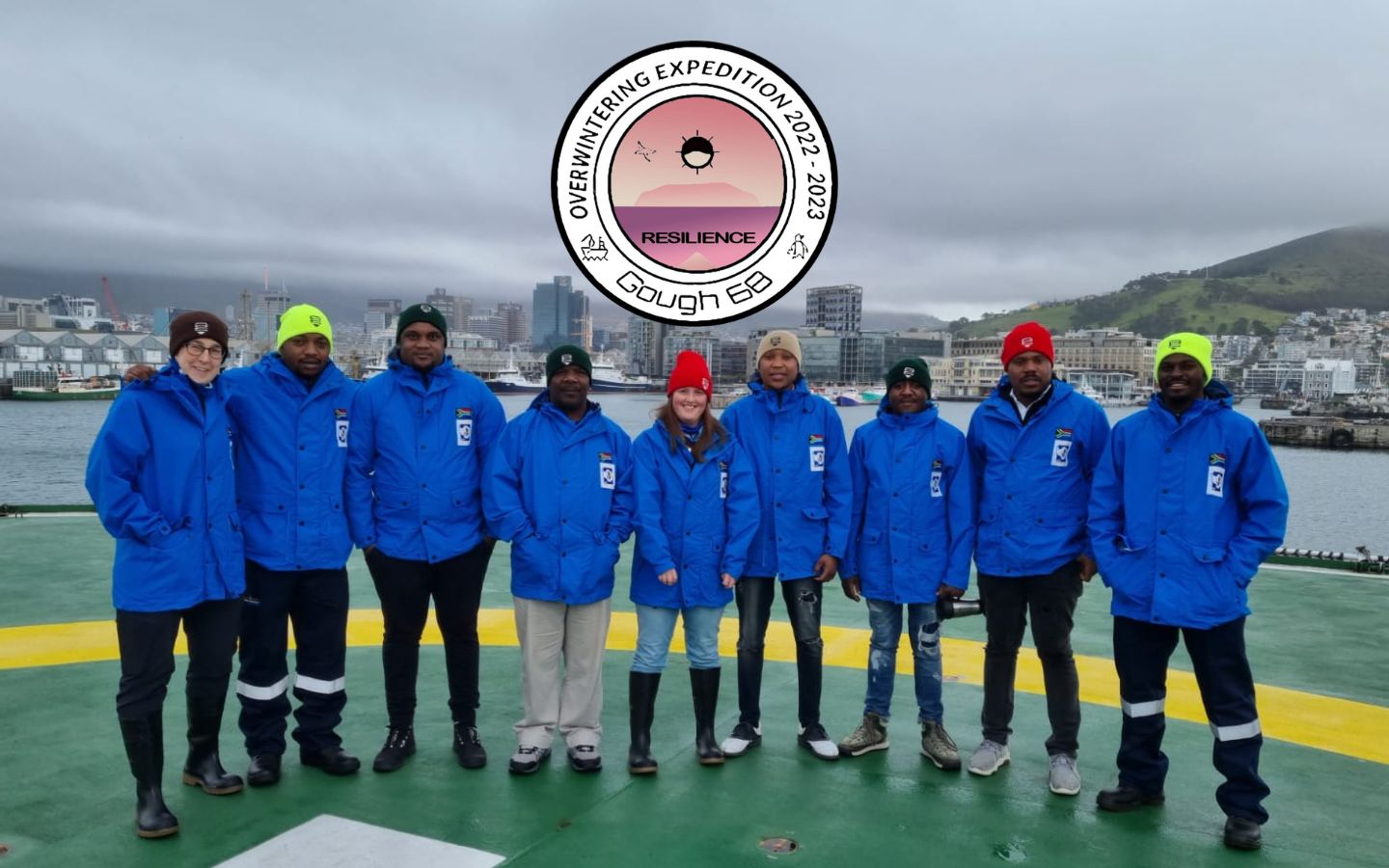
G68 Team (Left to Right): Lucy Dorman, Joyfull Ntobeko Gaju (removed from the team and replaced with G67 Medic, Sandile Nkebe), Philani Siyabonga Ngcobo (removed from the team and replaced with G67 Assistant Meteorological Technician, Tshililo Kharivha), Sibusiso Maduna, Rebekah Goodwill, Mphumzi Brooklyn Zilindile, Eddy Mfezeko Xaki, Khuliso Collen Maphaha, Mayembe Kapenda.
On 20 August 2022, the S.A. Agulhas II departed to Gough Island, via Tristan da Cunha. They will soon arrive at their new home, where they will be living for the next approximately 13 months. The G68 team will replace the G67 team.
68th Gough Island Overwintering Team (G68)
We asked the team members why they applied to be part of G68?

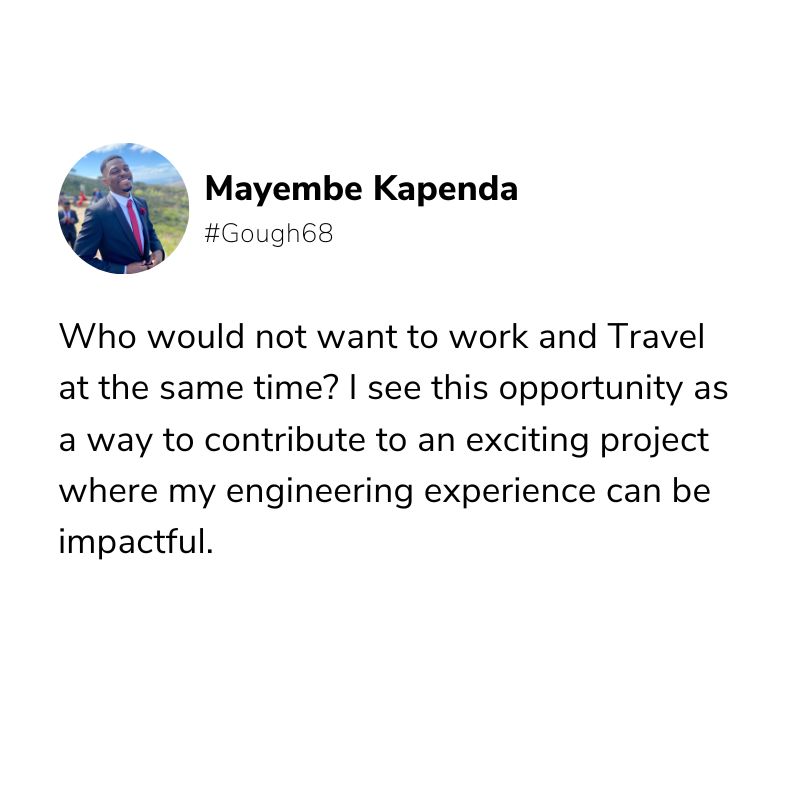
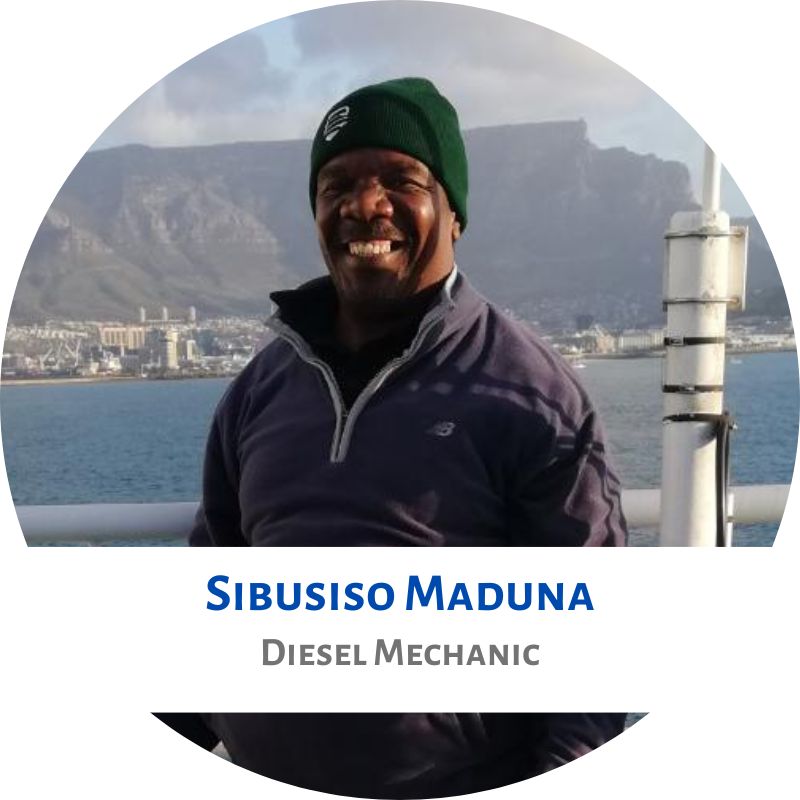
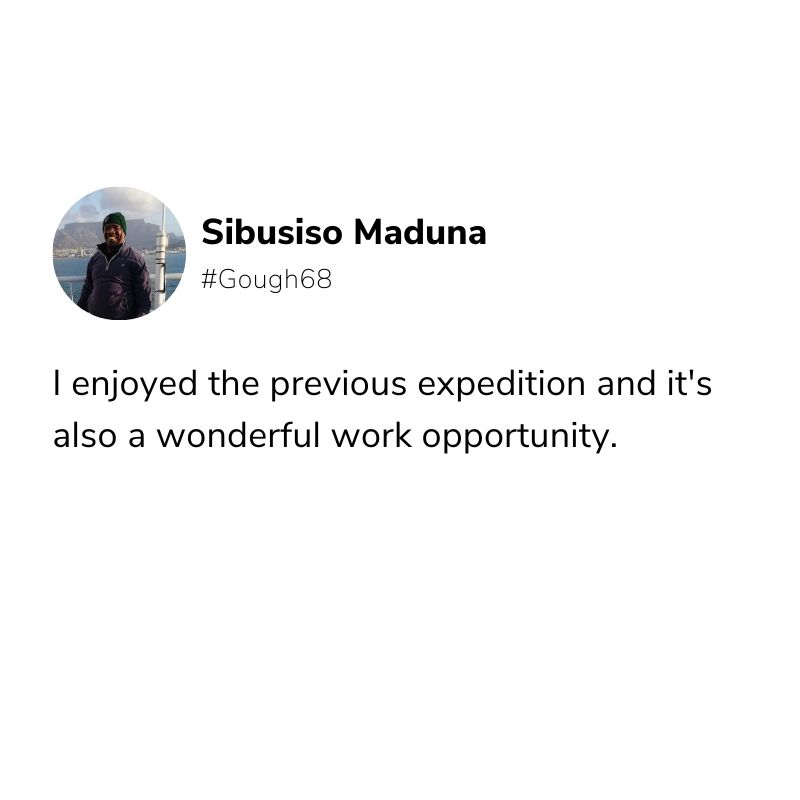
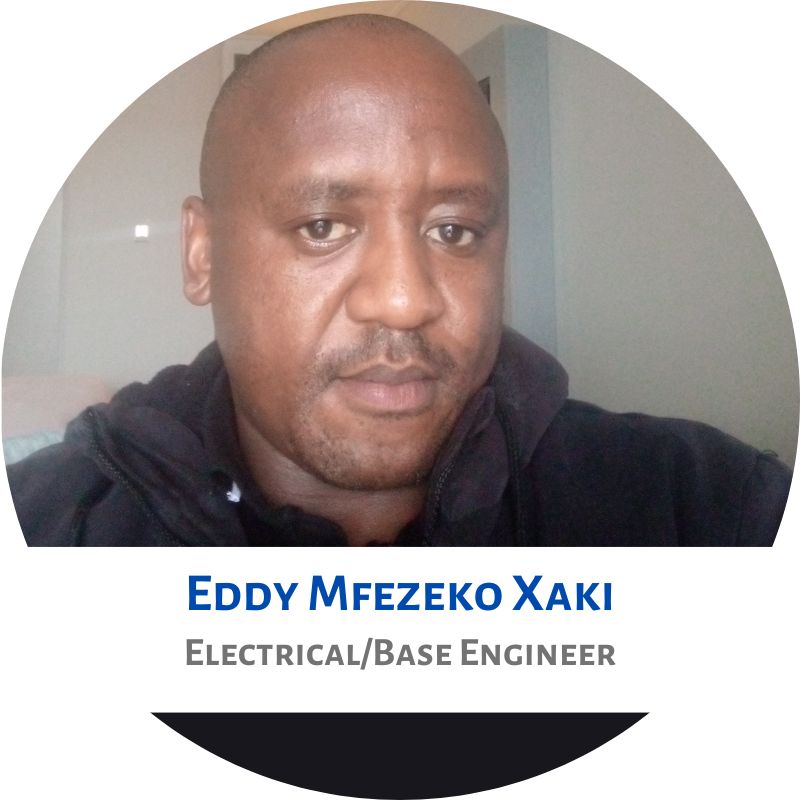
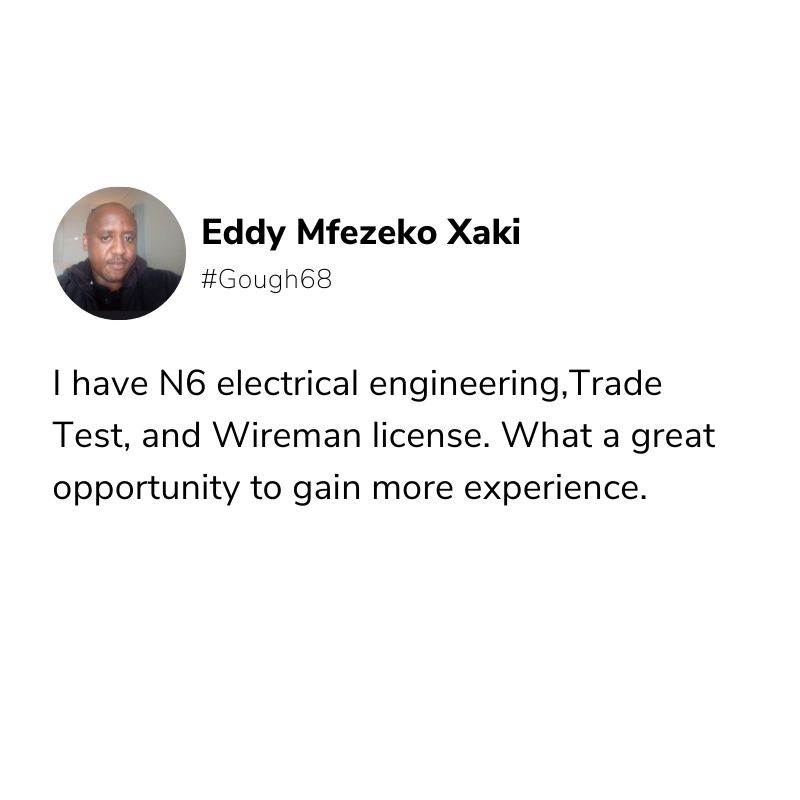
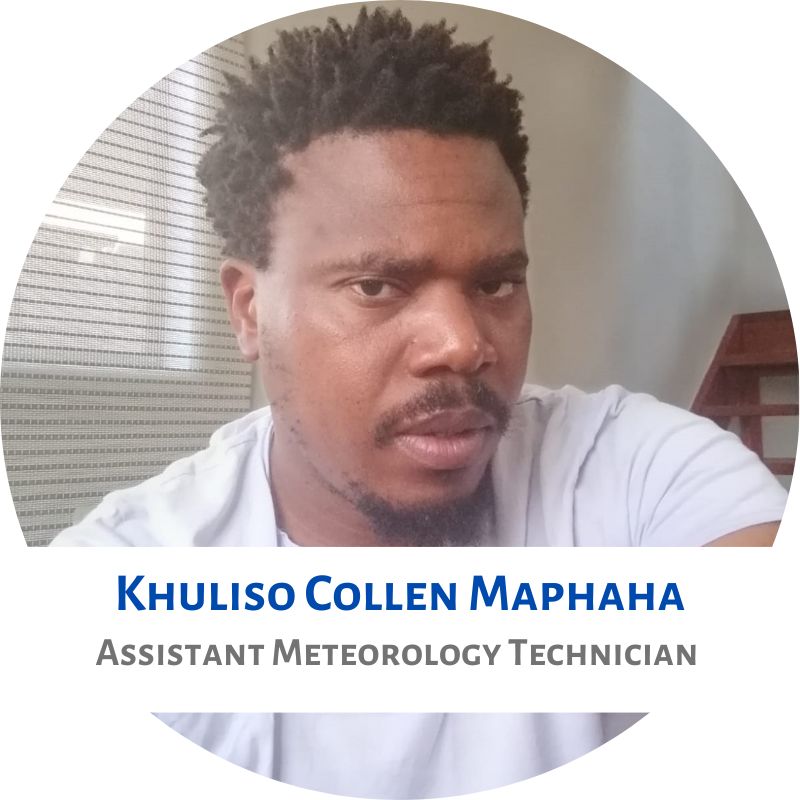

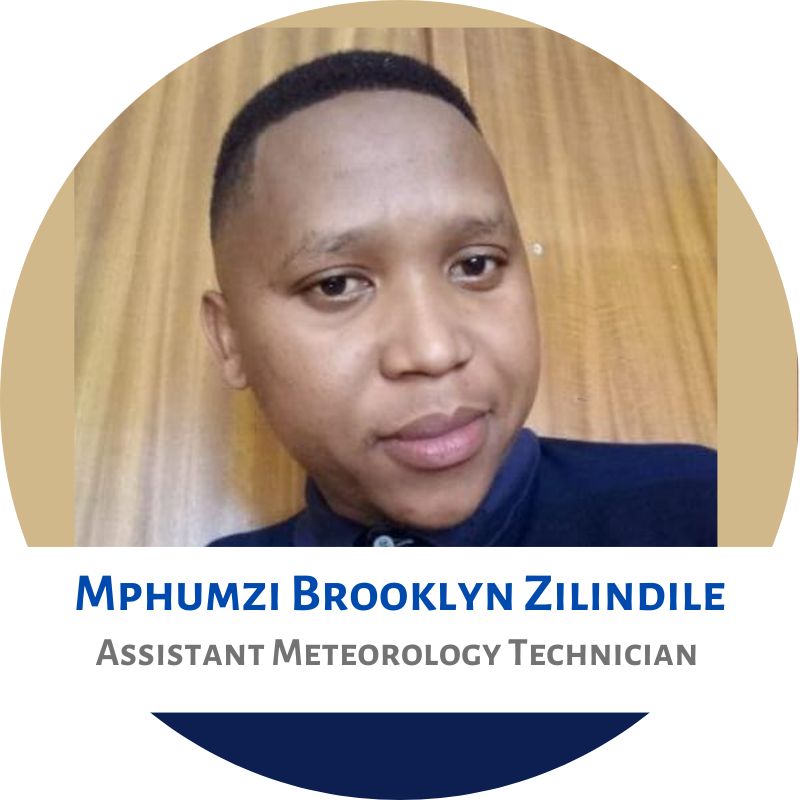
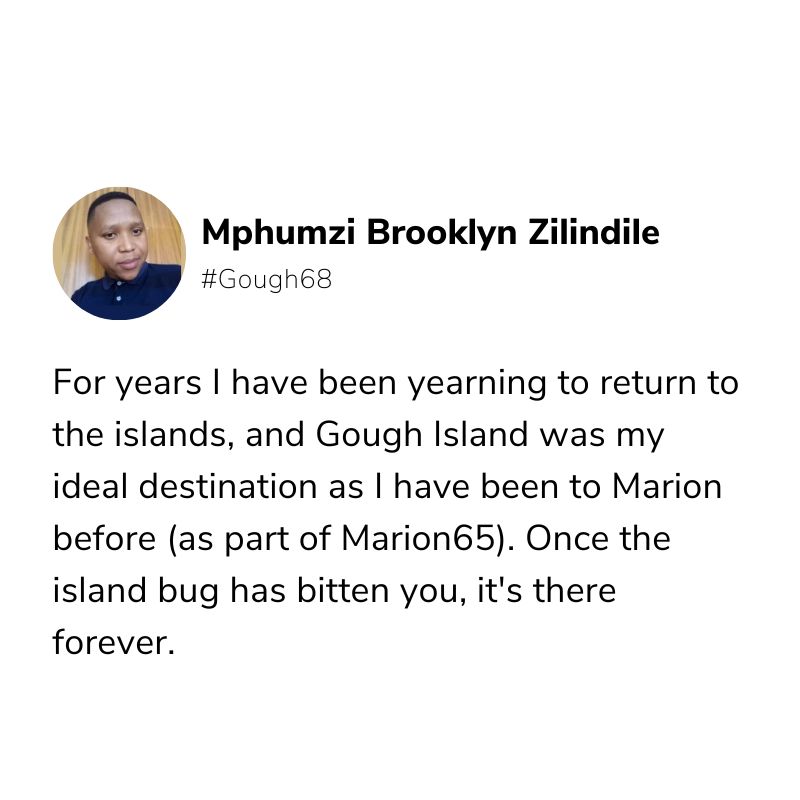
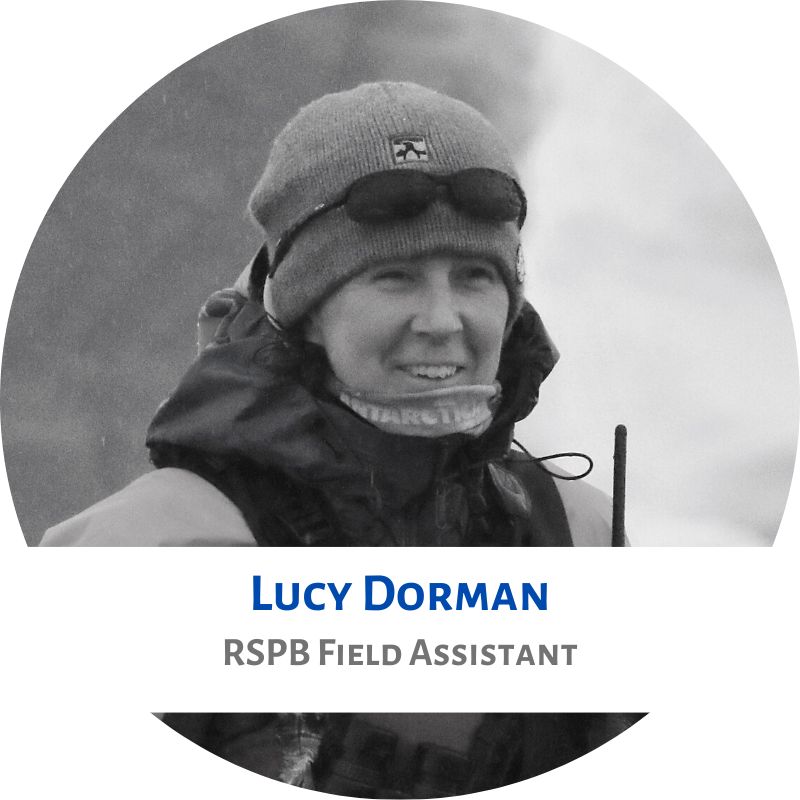
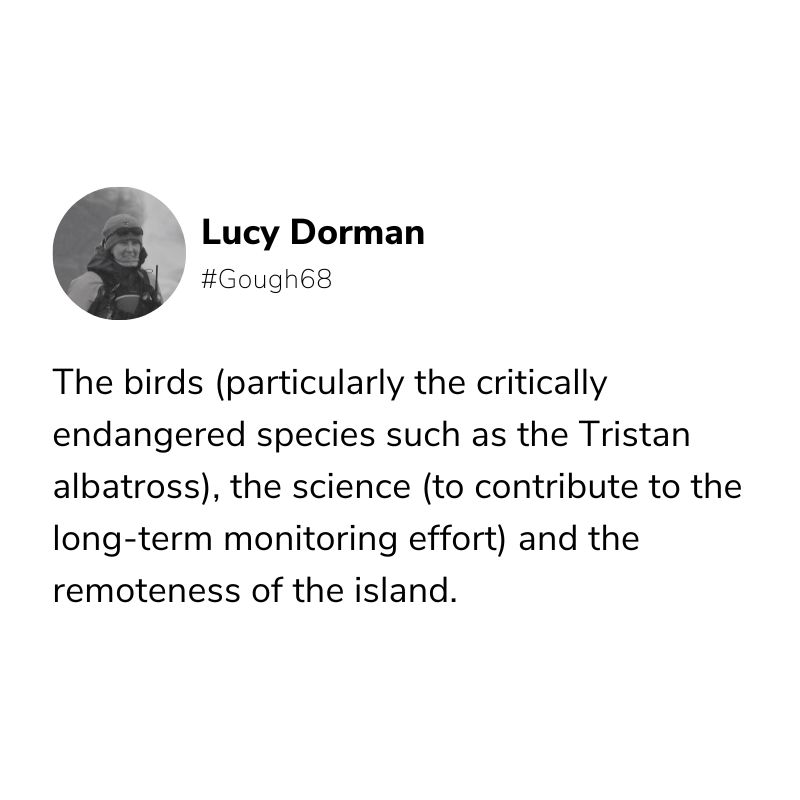
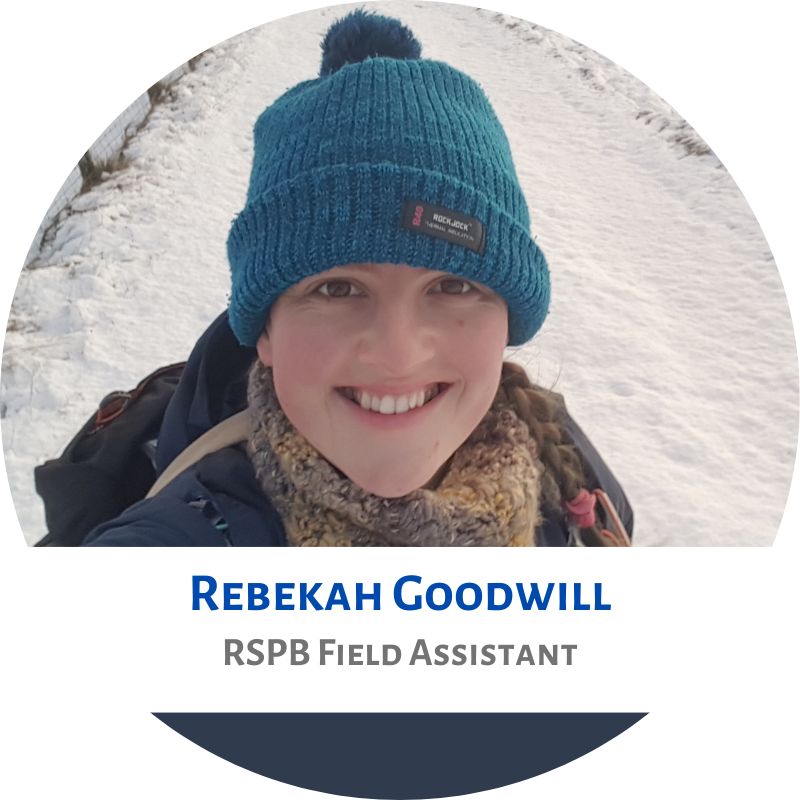

Two team members stayed behind from G67. The Medical Orderly, Sandile, will be replaced at a later stage and Tshililo will stay on for the year as part of G68.
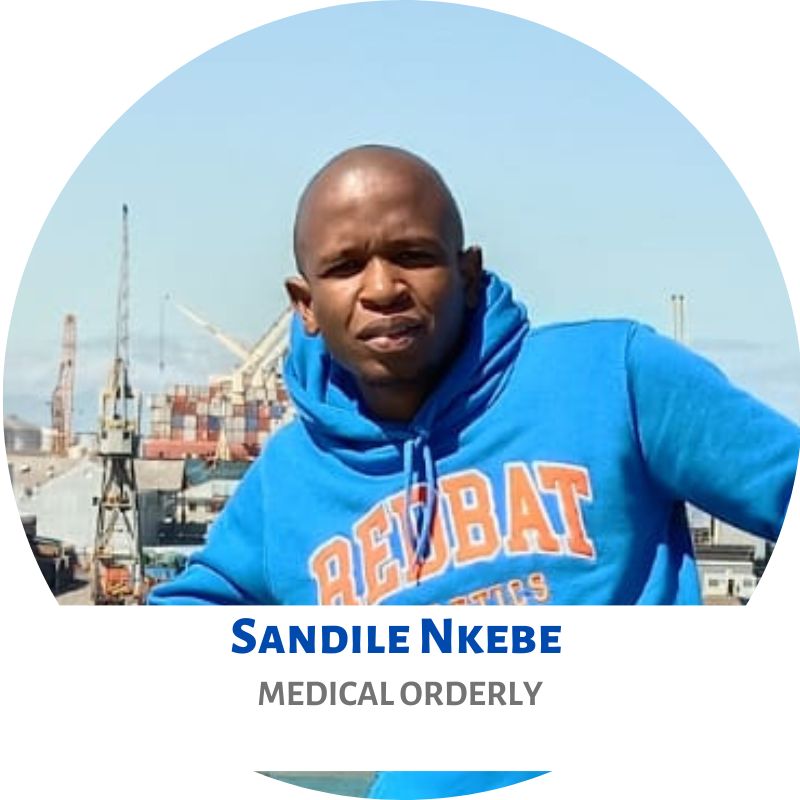
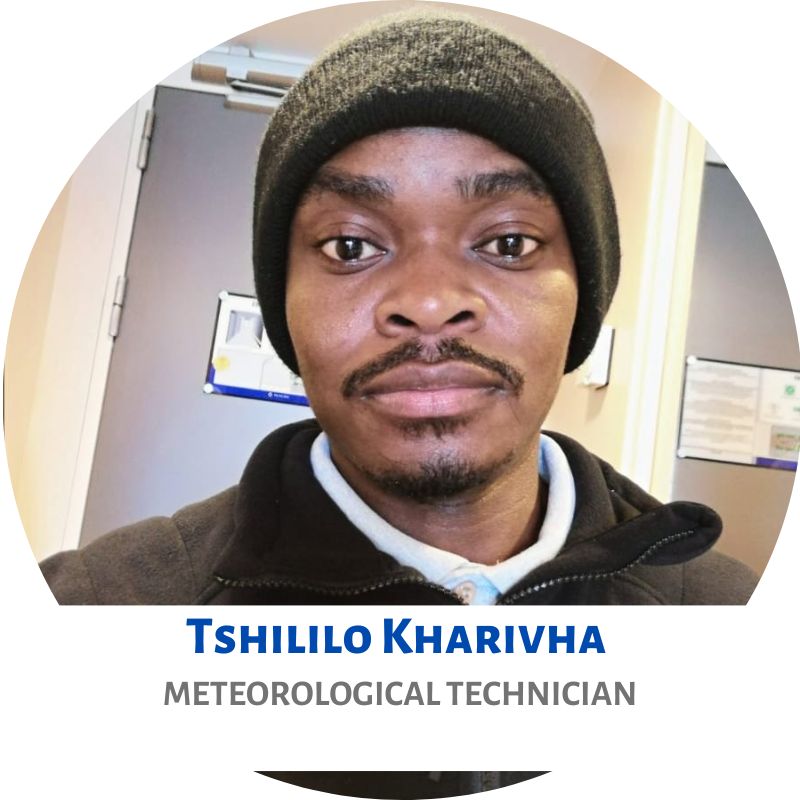
Anche Louw, Antarctic Legacy of South Africa, 25 August 2022, updated on 19 September 2022.
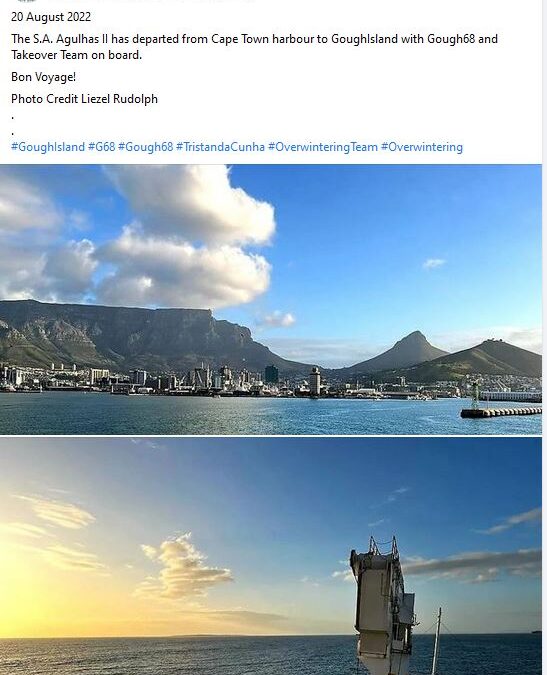
by Ria Olivier | Aug 23, 2022 | Current Event, Gough Island, News, Overwintering Team, SA Agulhas II, SANAP, Science, Southern Ocean, Stations, Take-Over Operations, Tristan da Cunha
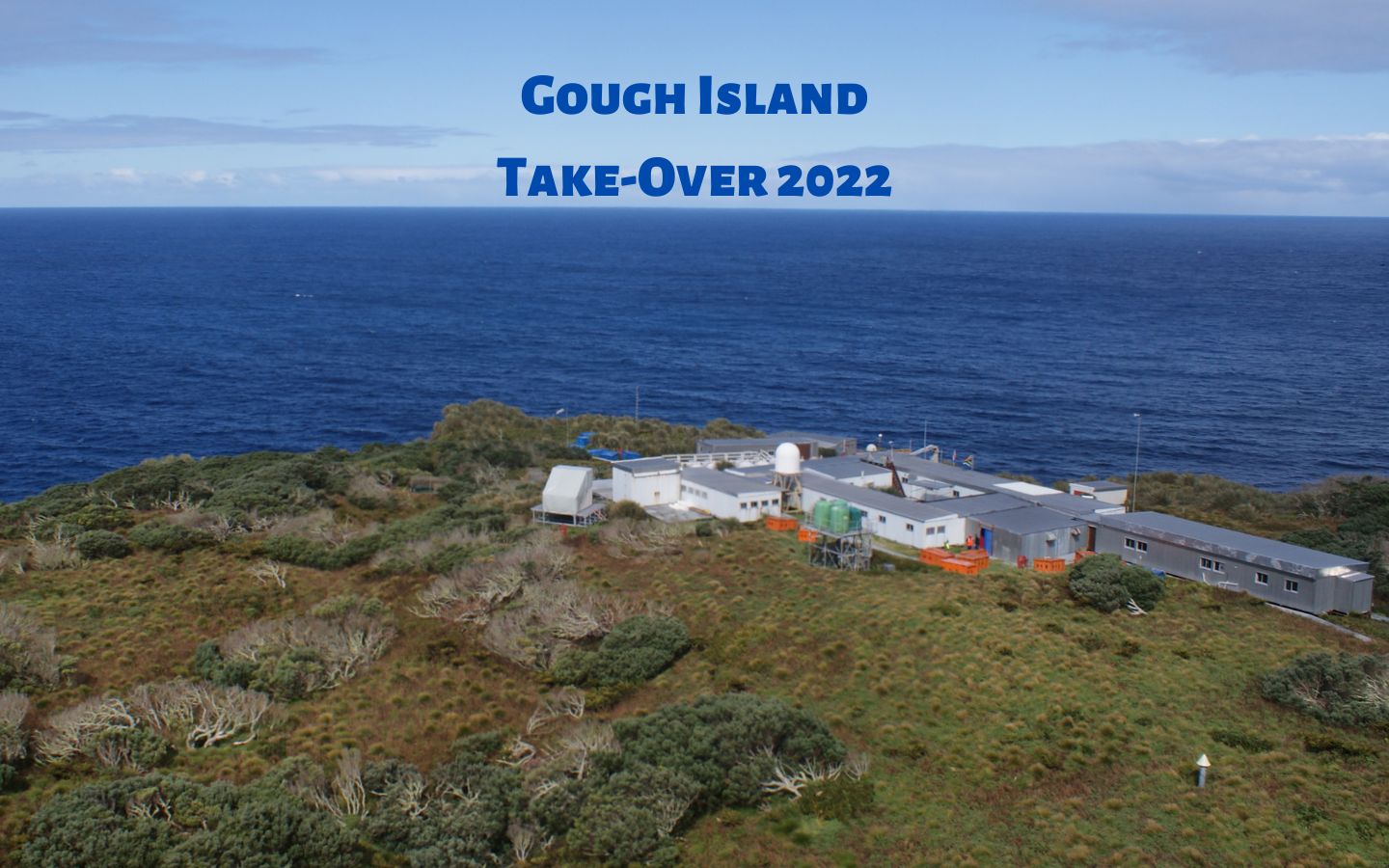
The S.A. Agulhas II departed from East Pier, V&A Waterfront on her annual Gough Island relief voyage on Saturday, 20 August 2022.
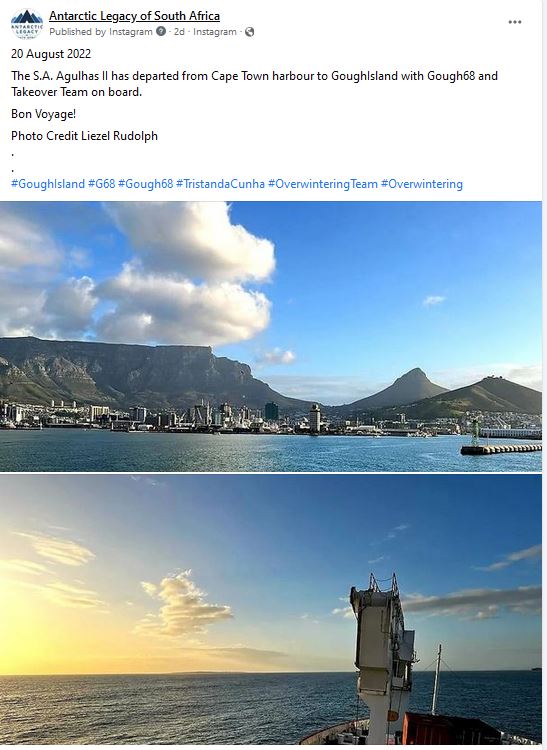
On the way to Gough Island, the vessel will stop at Tristan da Cunha, offloading Tristan passengers and cargo. This stopover will approximately be 60 hours. From here the vessel will depart to Gough Island. Passengers will disembark and cargo will be offloaded with helicopters. Scientific projects will commence.
Onboard are the DFFE Logistics team, the 68th Gough Island Overwintering team (9 team members), the National Department of Public Works (NDPW) maintenance team, Helicopter crew, Scientific personnel, and Tristan passengers.
Logistics Team
Department of Forestry Fisheries and the Environment (DFFE)
Directorate: Southern Oceans & Antarctic Support
Management, logistics and support for this voyage |
| Departmental Co-ordinator (DCO) | Ms Nomzi Ndzandzeka |
| Assistant DCO | Mr Zukisa Kuse |
| Technical Section | Mr Willem Boshoff |
| Medical Doctor | Dr MC Taggart |
| Waste Technician | Mr Tatulo Fipaza |
68th Gough Island Overwintering Team (Click here for profile pictures of the team members)
| Medical Orderly/Team Leader | Mr Joyfull Ntobeko Gaju |
| Diesel Mechanic | Mr Sibusiso Maduna |
Communications Engineer/
Deputy Team Leader | Mr Mayembe Kapenda |
| Electrical/Base Engineer | Mr Eddy Mfezeko Xaki |
| Senior Meteorology Technician | Mr Philani Siyabonga Ngcobo |
| Assistant Meteorology Technician | Mr Khuliso Collen Maphaha |
| Assistant Meteorology Technician | Mr Mphumzi Brooklyn Zilindile |
| RSPB Field Assistant | Dr Lucy Dorman |
| RSPB Field Assistant | Ms Rebekah Goodwill |
National Department of Public Works Maintenance Team
| Project Manager Leader | Mr Takalani Mudau |
Refrigeration Mechanical
& Deputy Leader | Mr William E Kriege |
| Carpenter | Mr A Petersen |
| Carpenter | Mr E Roberts |
| Carpenter | Mr ME Gazi |
| Bricklayer | Mr MI Jantjies |
| Plumber | Mr M Maluka |
| Plumber | Mr MW Samsodien |
| Plumber | Ms N Sogoni |
| Painter | Ms B Nelani |
| Crane Technician | Mr James Page |
| Crane Technician | Mr L Pierce |
| Mechanical | Mr J Zeelie |
| Mechanical | Mr MLG Porta Nova |
| Mechanical | Mr B Mpengesi |
| Mechanical | Mr LN Thomas |
Helicopter Crew
| Team Leader & Engineer | Mr Raymond van der Watt |
| Captain | Mr Waldo Venter |
| Captain | Mr Eugene Viljoen |
| First Officer | Mr Mukapitendwa Khalushi |
| First Officer | Mr Jason Abrey |
| Engineer | Mr Daniel Carstens |
Engineer Engine/
HLO/Crewman | Mr Warren Vogt |
| EngineerCrewman | Mr Eduan Teich |
| EngineerCrewman | Mr Jodi Brophy |
| Fire Fighter | Mr Zakariah Johnson |
Scientific fieldwork planned for the 2022 take-over
| South African Weather Service (SAWS) |
| Atmosphere and Ocean Surface Research |
| Group Leader | Mr. Julian Grace |
|
| Department of Forestry, Fisheries and the Environment (DFFE) |
| Monitor trends and changes in water quality, provide guidance and support |
| Group Leader | Ms Silindokuhle Ndlela |
|
| Royal Society for the Protection of Birds (RSPB) |
| Gough Island Restoration Programme |
| Group Leader | Dr Antjie Steinfurth |
|
| South African National Space Agency (SANSA) |
| Polar Space Weather Studies |
| Group Leader | Mr Christopher Gray |
|
| University of Fort Hare |
| Landscape and climate interactions (LCI) |
| Group Leader | Dr Elizabeth Rudolph |
Featured Image: Gough Island station (Credit: Julius Klette).
Anche Louw, Antarctic Legacy of South Africa, 23 August 2022
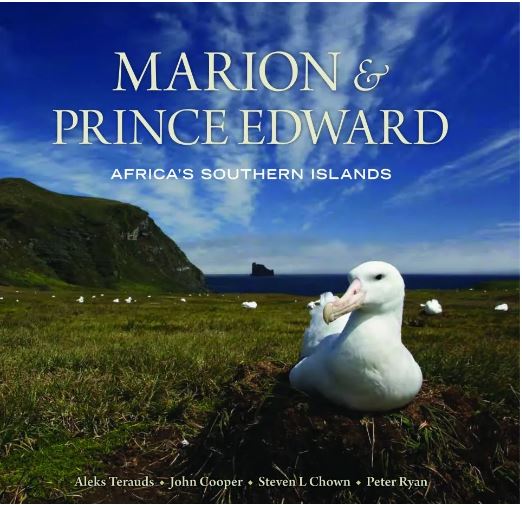
by Ria Olivier | May 31, 2022 | Announcement, Gough Island, Marion Island, News, Prince Edward Island, SANAP, Science, Southern Ocean, sub-Antarctic, Tristan da Cunha
Congratulations to Prof Peter Ryan, awarded with the BirdLife South Africa Gill Memorial Medal, for an outstanding lifetime contribution to ornithology in southern Africa.
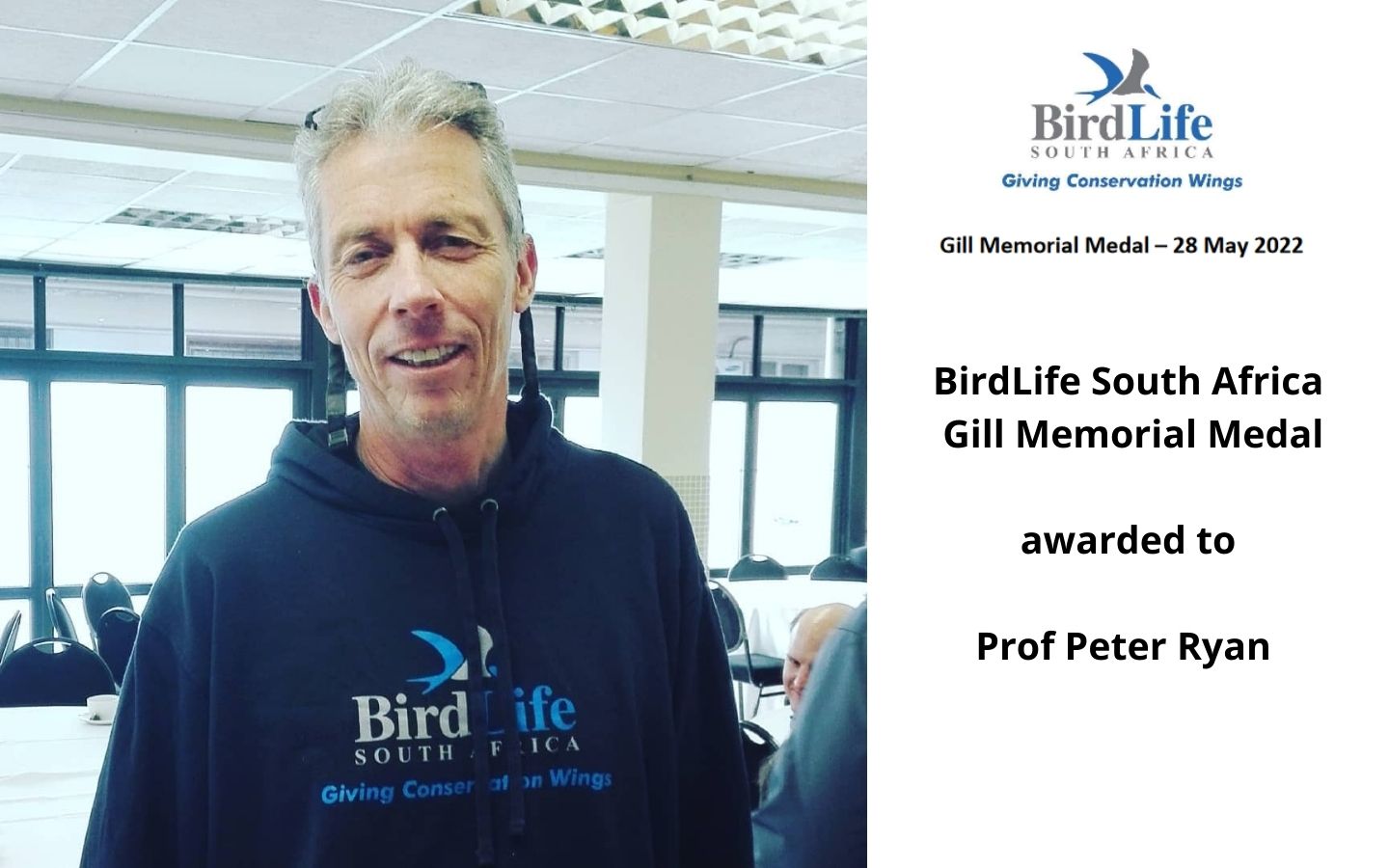
Prof Ryan, an A-rated Ornithologist and Director of the Percy FitzPatrick Institute of African Ornithology at the University of Cape Town, has been part of the South African National Antarctic Programme for more than two decades, doing research on seabirds breeding on Marion Island and the Tristan archipelago, which includes Gough Island. Prof Ryan’s latest research within SANAP is focused on “Avian scavengers as indicators of recovery of an island biota”, co-led with Dr Maëlle Connan (Research Fellow in the Marine Apex Predator Research Unit, Nelson Mandela University). Click here to read more about this project.
He is the author and co-author of a number of books on seabirds and the sub-Antarctic islands. Here is his latest publication: Guide to Seabirds of Southern Africa.


The Citation for Prof Ryan’s award – Click here.
In 2012, John Cooper, who was extensively involved in long-term seabird monitoring studies on Gough and Marion islands since the 1980s, received this award for his outstanding contribution to ornithology in southern Africa.
Featured Image: Prof Peter Ryan at the 5th SANAP Symposium (2018) in Hermanus, where he presented his work on “Plastics in Antarctica – preliminary findings from the Antarctic Circumnavigation Expedition (ACE).
Anche Louw, Antarctic Legacy of South Africa, 31 May 2022
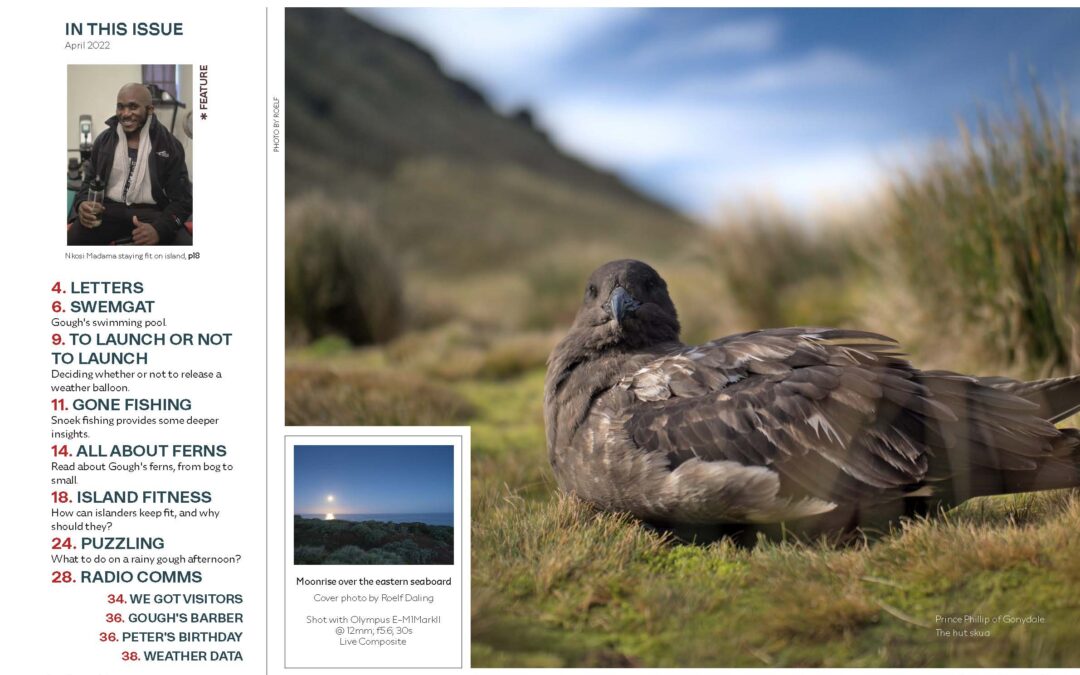
by Ria Olivier | May 10, 2022 | Announcement, Gough Island, Newsletters>Gough Island Newsletters, Overwintering Team, SANAP, Stations
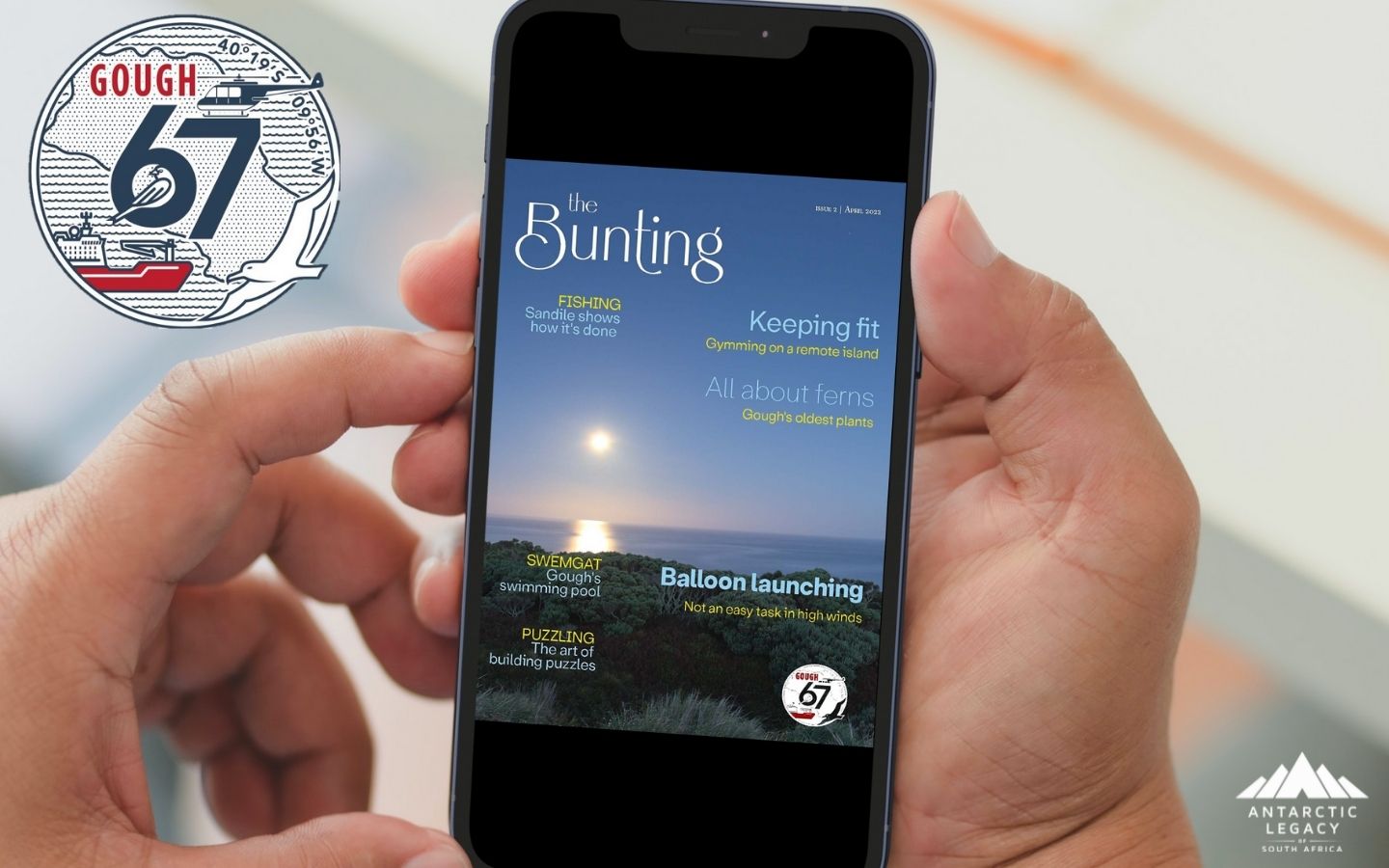
The current overwintering team on Gough Island, Gough 67, compiled their second newsletter.
What will you find in this issue:

Click here to view or download this latest issue of The Bunting (Gough Island Newsletter).
Do you want to have a look at some other newsletters from previous teams? Find it all here.
Anche Louw, Antarctic Legacy of South Africa, 10 May 2022
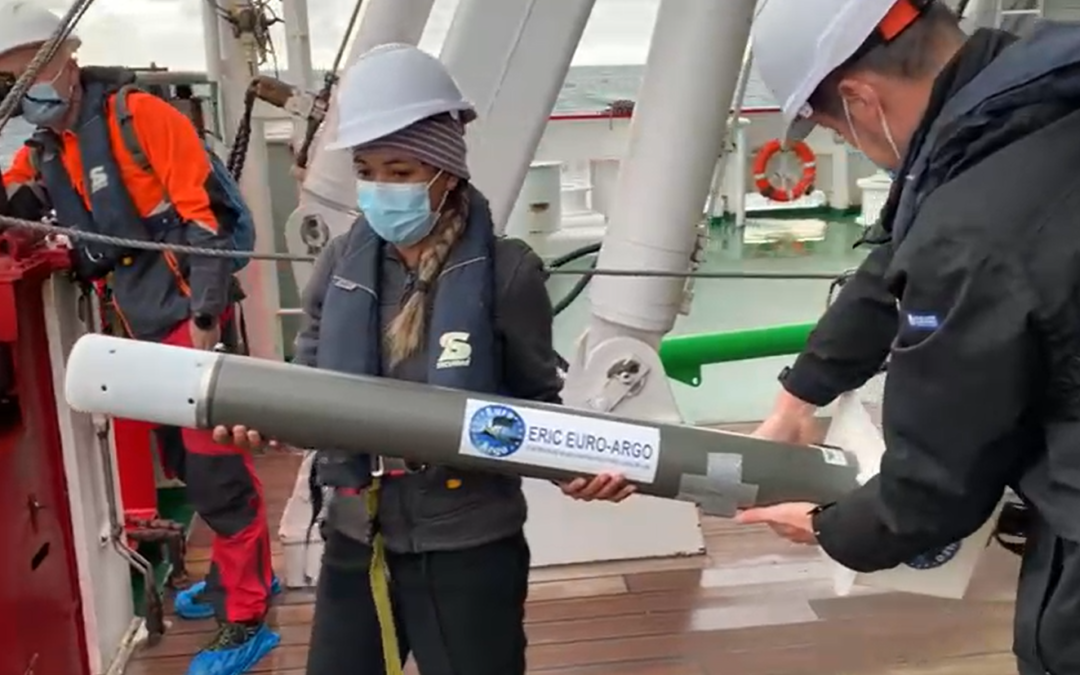
by Ria Olivier | Mar 23, 2022 | Antarctica, Gough Island, Important Dates, International Days, Marion Island, Meteorology, Research, SA Agulhas II, SANAE, SANAP
Meteorological and oceanographic (met-ocean) data supplied by the South African Weather Service played an integral part in the recent and successful Endurance 22 expedition.
by Marc de Vos, Senior Scientist, South African Weather Service (SAWS) Marine Research Unit.
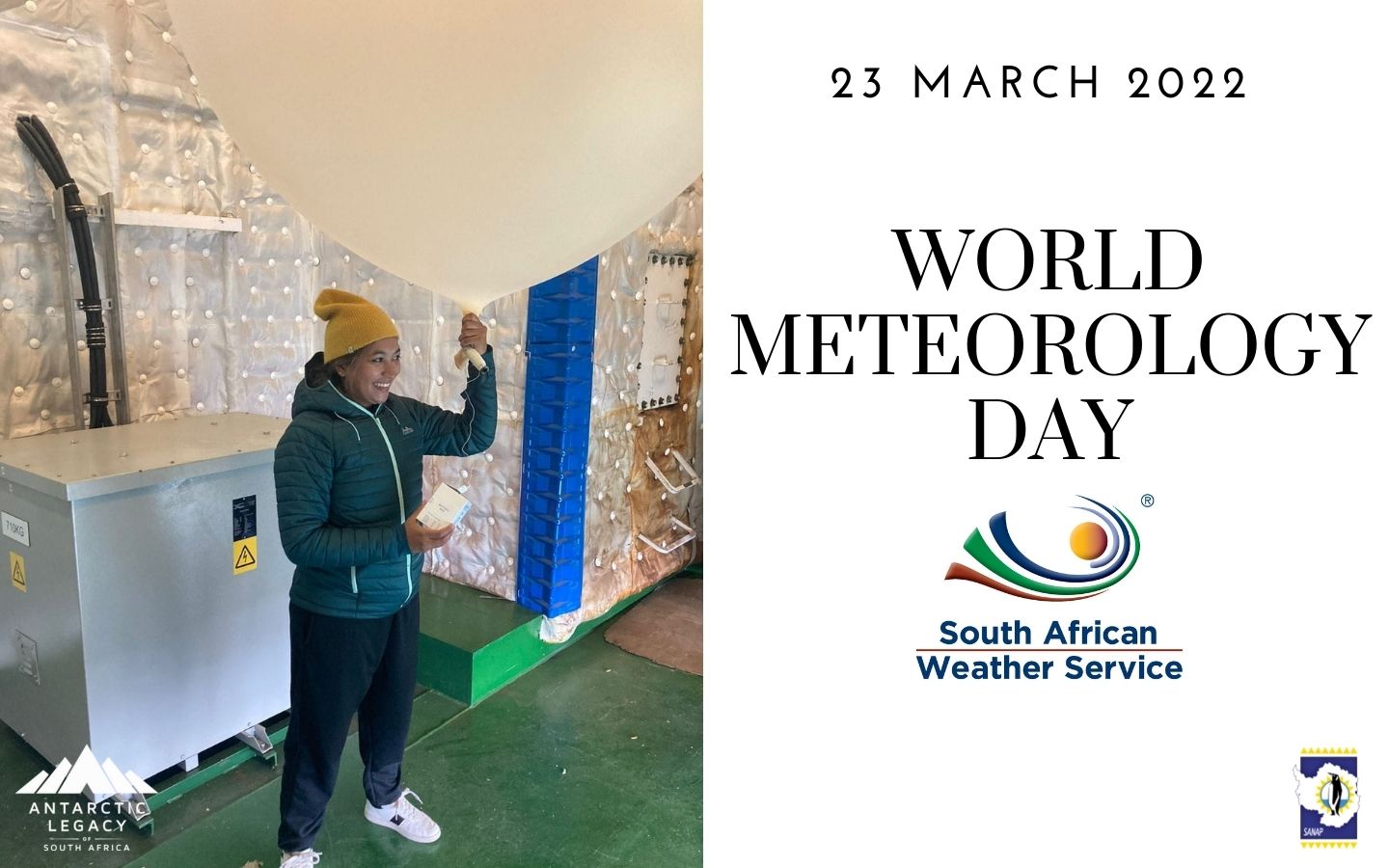
Carla-Louise Ramjukadh preparing to deploy a radiosonde (weather balloon). Find out more about a radiosonde – check out this video (click here).
The Endurance 22 expedition has returned from the Weddell Sea aboard the S.A. Agulhas II, having successfully located and surveyed the wreck of Sir Ernest Shackleton’s legendary Endurance. For the safety of any maritime activity, information about the environmental conditions is important. Mariners constantly evaluate factors such as sea-state (the combined effect of wind and waves on the surface of the ocean), tides, and surface currents, all of which affect the navigability of the vessel. For highly specialised undertakings, this requirement becomes particularly acute. To assist, the South African Weather Service (SAWS) sent two scientists from its Marine Research Unit to provide meteorological and oceanographic (met-ocean) support to the expedition.
The first challenge associated with a voyage to the Weddell Sea is the transit from Cape Town, through the south Atlantic and the Southern Ocean. These ocean areas are characterised by a steady procession of midlatitude cyclones; storms that might be up to 2,000 km in diameter, bringing strong winds, high seas, and powerful underlying ocean currents. These are the phenomena behind the nicknames for the latitudinal bands through which the S.A. Agulhas II needed to transit; the “Roaring Forties”, “Furious Fifties” and “Screaming Sixties”. In particular, the Southern Ocean is widely regarded as the roughest on the planet. This is largely due to the lack of land boundaries to break the acceleration of the ocean’s surface by the wind. Careful planning is required to thread a route through the storms, themselves moving and morphing, and the high seas which lag behind them. This process (sometimes more of an art!) is a fine balance between speed, efficiency, and risk-limitation, and the SAWS team on board worked closely with the ship’s officers to determine the most suitable route to the search area. It is a challenging but exciting task. We use a mix of data from numerical models, free-drifting ocean instruments and satellites, and algorithms that assist to process these data. Ultimately, the experience of the ship’s officers and the exchange of information between scientists and navigators remain key in balancing the myriad of competing factors.
Upon arrival in the sea ice, different challenges arise. The sea ice might be up to 4 metres thick, with an average of around 1.5 m, and covers the search area entirely. A process of constant ice-breaking, repositioning, drifting with the ice, and deploying the autonomous underwater vehicles (AUVs) to scan the sea bed begins (read more about these vehicles here). Whilst surveying the ship drifts with the ice, but the search area on the sea bed does not, and therefore it is vital to anticipate wind and tidal shifts such that the drift can be predicted and deployment of the AUVs planned accordingly. SAWS scientists worked closely to support the highly skilled sea ice specialists from Drift + Noise Polar Services to provide supplementary information of this nature.
Prediction and analysis are not the only tasks for met-ocean scientists on board. Throughout the voyage, regular weather/ocean observations were performed and a range of meteorological instruments was deployed. These included Argo floats (see image above), surface velocity program (SVP) weather buoys, Sofar Ocean Wave Spotter buoys, and atmospheric radiosondes. These instruments drift freely in the ocean (or rise through the atmosphere, in the case of the radiosonde), collecting and transmitting data in an-otherwise data sparse region. Data are processed and fed to global numerical weather/ocean prediction models to improve their predictions via a process called data assimilation. Generally, the more data supplied to models, the better their performance. In many cases, measurements from these instruments are also available in real-time, providing an excellent means to onboard scientists by which to “ground-truth” ocean/weather predictions. Finally, data are archived in climate databases, for future use by climate change researchers.
Being able to play a small role in the success of Endurance 22 feels like a career-defining moment. A historic event of this scale, having taken place in so beautiful and dramatic an environment, is a uniquely rewarding experience. I am humbled to have been asked to participate and immensely grateful to the leadership of the expedition. I am also thankful to fellow expedition members and particularly my on-board colleague, Carla-Louise Ramjukadh, along with shore-based colleagues Tania Daniels, Michael Barnes and Tammy Morris for their tireless support behind the scenes. Even in the modern world, where almost everything can be navigated digitally, the fundamental effects of meteorology and oceanography continue to affect every human on the planet. Young people looking for where to apply their skills and ambitions should be encouraged by this, and the incredible opportunities which our science often provides.
Text by Marc de Vos, Senior Scientist, South African Weather Service (SAWS) Marine Research Unit. Edited by Anche Louw, Antarctic Legacy of South Africa, 23 March 2022

 “It is with mixed emotions that we send these final greetings from the G67 team! The time has come to present our ultimate Bunting newsletter before handing over the reins to the next editor(s) who will be responsible for introducing the resilient members of G68.” – Editor Gough Bunting.
“It is with mixed emotions that we send these final greetings from the G67 team! The time has come to present our ultimate Bunting newsletter before handing over the reins to the next editor(s) who will be responsible for introducing the resilient members of G68.” – Editor Gough Bunting.
